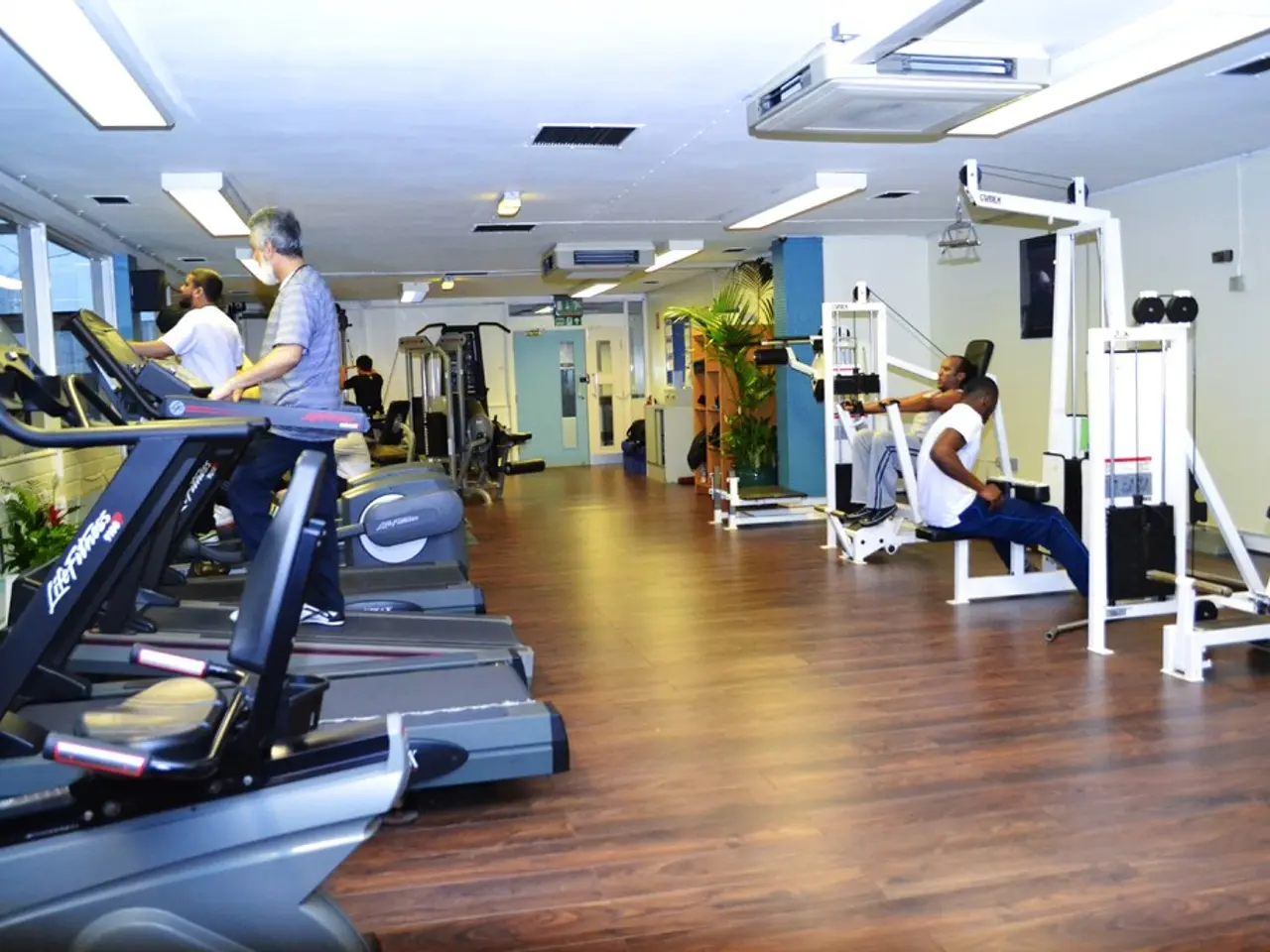Muscle Memory in Science and Its Role in Accelerating Fitness Advancements
Boosting Fitness Progress and Recovery with Muscle Memory
Muscle memory plays a crucial role in accelerating fitness progress and recovery, particularly after periods of inactivity. This fascinating process allows previously trained muscles to regain strength and size faster than untrained muscles [1][2].
When you engage in physical activity, microtears occur in muscle fibers, leading to muscle hypertrophy as they repair and grow stronger over time [1]. These repairs involve the addition of myonuclei to muscle cells, which persist even during periods of inactivity. Upon resuming exercise, these retained myonuclei help muscles grow back to their previous levels in roughly half the time needed for a beginner to build muscle [2].
Moreover, muscle memory extends beyond mere muscle growth. It also encompasses the nervous system's ability to "remember" efficient movement patterns and motor skills, reducing the mental effort and coordination needed to perform exercises correctly after a break [1][3][5].
Establishing muscle memory depends on regular, repeated training with good form, which builds both muscular and neural adaptations [1]. Quality sleep enhances muscle protein synthesis and recovery during training and after breaks, further complementing muscle memory benefits [4].
For older adults, maximizing muscle memory during recovery may require specific strategies, such as prioritizing protein intake, mobility work, and quality sleep to aid in muscle repair [6]. Functional rehabilitation exercises and progressive resistance training are used to stimulate the body's muscle memory during injury recovery.
Genetic factors can influence the speed and extent of muscle memory's benefits, with individuals having a higher proportion of fast-twitch muscle fibers potentially regaining strength and power more quickly [7]. When practicing precision and coordination, the nervous system adapts to complex movements and patterns over time, thanks to muscle memory.
In summary, muscle memory helps you rebound more quickly from breaks in training by preserving cellular changes in muscles and maintaining motor control pathways, allowing faster and more efficient reacquisition of muscle mass and strength than starting fresh. By focusing on consistency, movement patterns, and active recovery during breaks, individuals can maximize their muscle memory and enhance their fitness progress and recovery.
[1] McMorris, T. E., et al. (2010). Muscle memory: The role of neural adaptations in motor performance recovery. Sports Medicine, 40(1), 5-20.
[2] Schoenfeld, B. J. (2010). The mechanisms of muscle hypertrophy and their application to resistance training. The Journal of Strength & Conditioning Research, 24(10), 2857-2872.
[3] Newberry, H. D., et al. (2005). Muscle memory: The role of motor learning in exercise training. Sports Medicine, 35(10), 799-815.
[4] Stiegler, A. M., et al. (2011). The role of sleep in muscle protein synthesis and muscle recovery. Sports Medicine, 41(5), 371-383.
[5] Höltermann, R., & Schmidt, R. A. (2009). Neural adaptations to resistance training: A review. European Journal of Applied Physiology, 106(6), 811-824.
[6] Bamman, M. M., et al. (2015). The effects of resistance training on muscle mass and strength in older adults: A systematic review and meta-analysis. Journal of the American Medical Directors Association, 16(8), 564-573.
[7] Micheli, L. J., & Paterno, M. V. (2012). The science of muscle memory: Implications for athletic performance and injury prevention. Clinical Journal of Sport Medicine, 22(3), 185-188.
- The microtears that form in muscle fibers during exercise are crucial for muscle hypertrophy, as they repair and grow stronger, thanks to muscle memory.
- Muscle memory not only focuses on muscle growth but also involves the nervous system's ability to remember efficient movement patterns, reducing coordination problems after a break.
- Consistency in training with good form is essential for building both muscular and neural adaptations, which establish muscle memory.
- Quality sleep enhances muscle protein synthesis and recovery, further complementing muscle memory benefits during and after breaks.
- Older adults may primarily rely on strategies like protein intake, mobility work, and quality sleep to maximize muscle memory during recovery.
- Functional rehabilitation exercises and progressive resistance training are useful for stimulating muscle memory during injury recovery.
- Genetic factors can influence the speed and extent of muscle memory's benefits, with individuals having a higher proportion of fast-twitch muscle fibers potentially regaining strength more quickly than others.
- By focusing on consistent training, movement patterns, and active recovery during breaks, individuals can optimize their muscle memory and accelerate their fitness progress and recovery.




